Percussion Therapy For SMA Patients
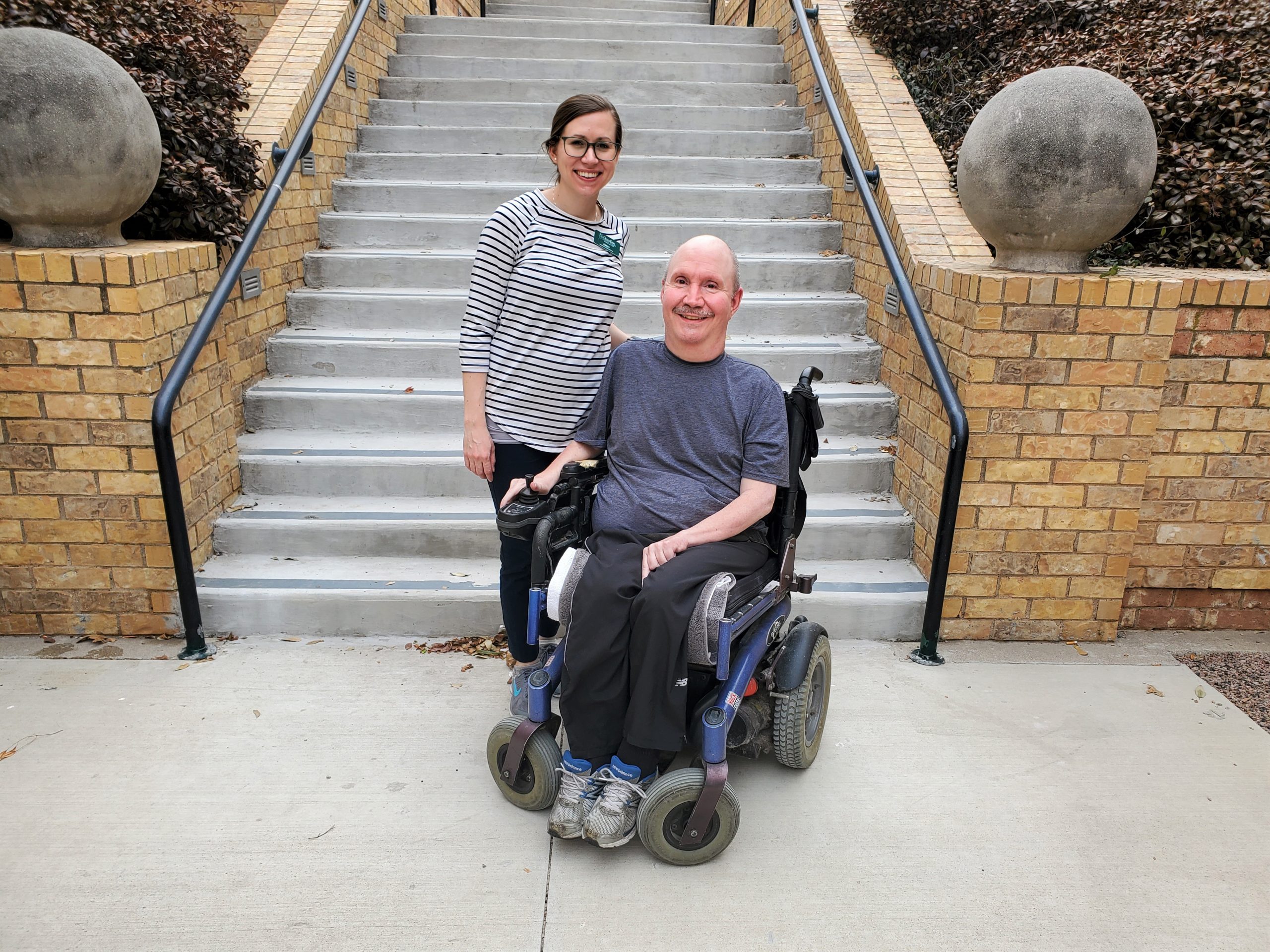
In 1980, when Michael was 15 years old, he underwent scoliosis surgery at Scottish Rite Hospital in Dallas. During his preop preparation, his parents performed percussion therapy on his back to keep excess fluid and mucus from building up in his lungs. They did this for three months before Michael had his scoliosis surgery, and after his surgery, his parents continued this type of percussion therapy for a few months to ensure that his lungs would remain clear.
Postural drainage and percussion physical therapy can be performed to loosen any mucous in the lungs and increase the ability to remove it by coughing. Recently, Michael had to miss a week of physical therapy secondary to an upper respiratory infection that had worsened with mucous buildup in his lungs. His doctors prescribed erythromycin [Z-Pac], to help kill off any infection that was in his lungs, but unfortunately, it didn’t take care of the excess fluid. During the same time that Michael started taking erythromycin, he also began using his cough assist machine that he had at his house. This cough assist helps to force air into the lungs, making it easier to not only open the upper lobes of the lungs, but it’s also strong enough to open the lower lobes as well. Patients with SMA tend to contract pneumonia rather easily, so pulmonologists will either prescribe a cough assist machine or a vibrating vest. Michael’s pulmonologist had actually prescribed both devices, but due to the weight of the vibrating vest, Michael was unable to use this particular device. The following week, when Michael returned to physical therapy, he was still having a hard time catching his breath, which kept Michael from getting any sleep. After checking back with his doctors, they prescribed Levofloxacin [Levaquin], which helped eliminate the residual fluid in his lungs.
Since Michael was unable to comfortably lay down in a supine position after returning to physical therapy, treatment day was built around keeping him sitting in his chair and providing him with as much relief as possible. As Michael’s physical therapy assistant, I’ve occasionally had to gear his physical therapy session based on how he’s feeling during that particular time. We discussed percussion therapy and how it could help with breaking up the mucous in his lungs, which would make it much easier for him to cough hard enough to excrete the fluid. Although it’s not comfortable to keep Michael in the correct angle to target each lobe, we managed to position him in an angle that was more comfortable for him, so that we could keep him in a forward position for a prolonged period when performing the percussion strikes. I positioned Michael at an approximate 45 to 50° angle of hip flexion and began his treatment with him seated in his chair. This was done by cupping my hand and performing percussion blows to different lobes for approximately eight to ten minutes, although it can take up to twenty minutes to perform, especially if you are using positional drainage as well.
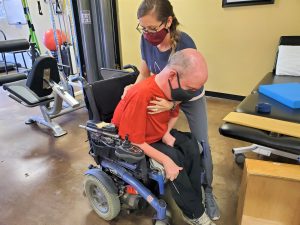
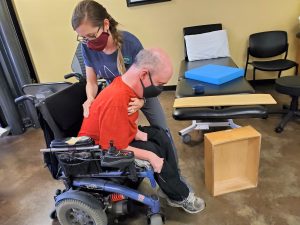
With a cupped hand, this should not be painful for the therapist or the patient. You should hear a hollow sound while performing the blows. Michael commented several times during his treatment that he felt as if he could fall asleep during the percussion therapy. Although I only focused on his back, I was careful to avoid the spine and lower lungs to avoid any discomfort. If this was performed on the front as well, I would have needed to avoid the breastbone and stomach. Ideally, this would be followed by forceful coughing to improve the excretion of the mucous to clear the lungs more efficiently. This technique could also be improved by positioning the patient in a position in which gravity could be of assistance in dislodging mucous, such as on your stomach with a pillow under your chest to tilt your head downward.
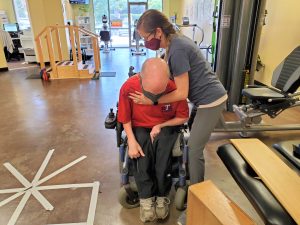
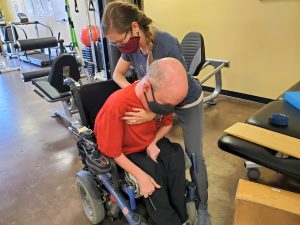
This technique would need to be avoided if a patient could have an adverse reaction to it, such as the inability to cough up any loosened mucous or damage to internal organs that could be affected by a percussion strike. Many different patient populations could benefit from this procedure, not just someone that has been diagnosed with SMA. If you are unsure if your patient would benefit from this procedure, or not sure if it is safe for them, be sure to confirm with their healthcare provider to ensure safety for everyone.
======================== Patient Perspective ========================

Patients with SMA run a high risk of pneumonia, given the fact that their ability to cough is limited by their weakened core strength and decreased lung functions. I remember my parents performing percussion therapy on me before my scoliosis surgery in 1980. Now that I’m an adult, I use a cough assist machine, which helps to open the upper and lower lobes of my lungs. By forcing these lobes to open, it breaks up the mucous that sticks to the wall of the lung, and by breaking this mucus up, it makes it much easier to get a deeper breath and to cough with enough force to clear the lungs.
Immediately after Emily performed this percussion therapy on me, I noticed that it was much easier to excrete this mucus, and using my cough assist machine 2 or 3 times per day, helped me to keep my lungs clear.
If you’re a physical therapist working with an SMA patient, and you notice that they are having difficulty taking a deep breath or coughing, you may want to have them consult a pulmonologist. By consulting a pulmonologist, they can prescribe different devices that the patient can use to help clear their lungs and to keep them healthier during the flu and pneumonia season. As stated above in Emily’s article, please have your patient consult with their primary care physician or pulmonologist before performing percussion therapy.



